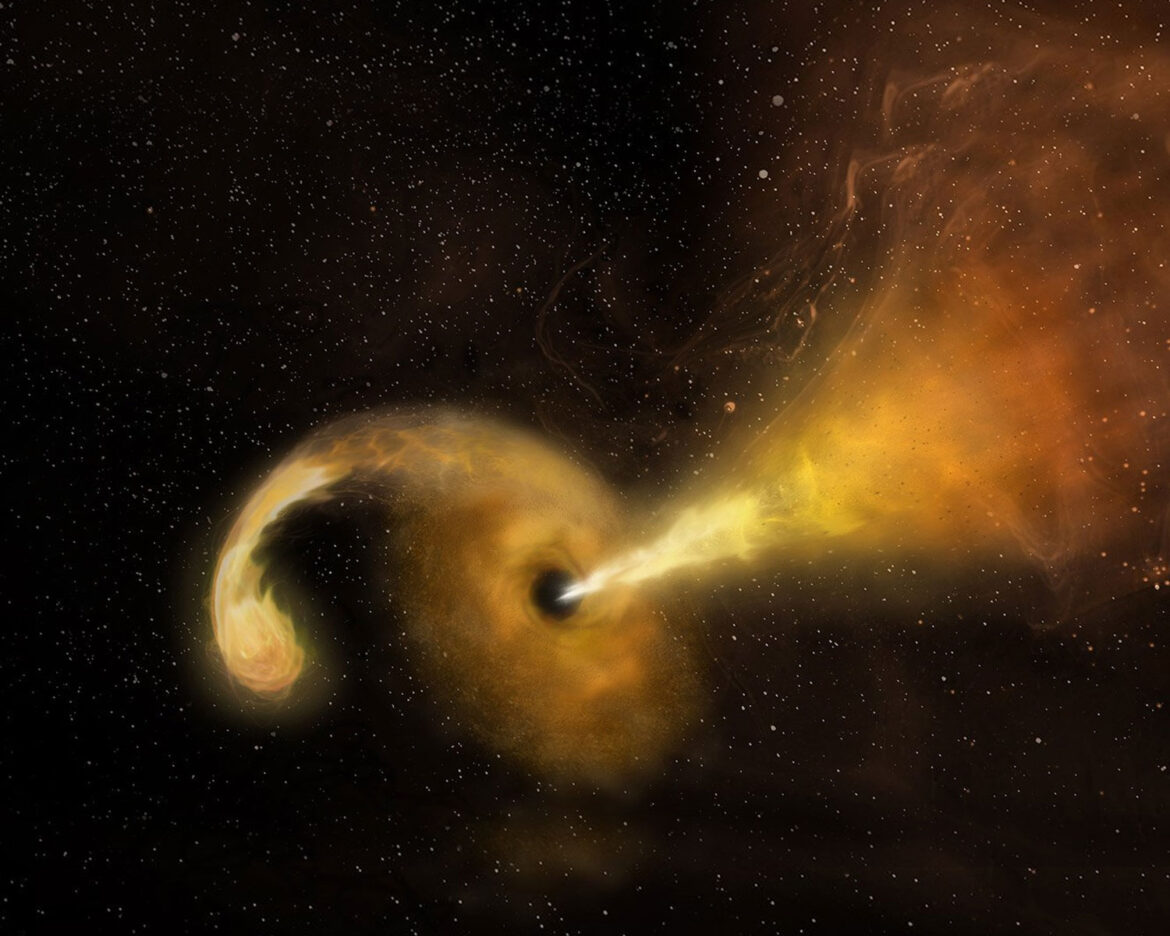A recent study has unveiled that black holes don’t merely devour stars in one fell swoop when they approach the event horizon. Instead, some black holes gradually feed on chunks of stars, some as colossal as Earth, shedding new light on the intricate dynamics of these colossal celestial entities.
Black holes, enigmatic and immensely massive objects often residing at the heart of galaxies, are formed from the remnants of massive stars that succumb to their own gravitational pull. These cosmic behemoths are so powerful that nothing, not even light, can escape their clutches.
According to the study, astronomers have identified a supermassive black hole at the center of a neighboring galaxy currently feasting on chunks of a star strikingly similar in size and composition to our own sun. It was observed that the star’s mass was devoured, amounting to approximately three times the mass of Earth, during each of its elongated, oval-shaped orbits.
This celestial spectacle was observed in a galaxy located approximately 520 million light-years away from our solar system. To put this vast distance in perspective, one light-year is equivalent to the distance light travels in a year, a staggering 5.9 trillion miles (9.5 trillion kilometers). The victimized star, entangled in a cosmic dance with the black hole, faced the repeated loss of its stellar atmosphere with each pass.
Remarkably, this particular supermassive black hole, though still significantly larger than our sun, is relatively smaller than others, boasting a mass merely a few hundred thousand times that of our sun.
The study relied on data from NASA’s Neil Gehrels Swift Observatory to monitor the star’s orbit, revealing that it completes its circuit around the black hole every 20 to 30 days. As it nears the black hole, it undergoes a harrowing experience, losing its stellar matter, a phenomenon known as a “repeating partial tidal disruption.”
Upon being devoured, the temperature of the ingested matter skyrockets to approximately 3.6 million degrees Fahrenheit (2 million degrees Celsius), generating an intense burst of X-rays.
Astrophysicist Rob Eyles-Ferris, hailing from the University of Leicester in England and one of the study’s authors, elucidated, “What’s most likely to happen is the star’s orbit will gradually decay and it will get closer and closer to the supermassive black hole until it gets close enough to be completely disrupted.” He added, “That process is likely to take years at least – more likely decades or centuries.”
This remarkable discovery marks the first time a star of sun-like proportions has been observed undergoing a gradual consumption by a supermassive black hole. Eyles-Ferris emphasized, “There are lots of unanswered questions about tidal disruption events and exactly how the orbit of the star affects them. It’s a very fast-moving field at the moment. This one has shown us that new discoveries could come at any time.”
As scientists continue to probe the depths of our universe, this revelation challenges our existing understanding of black holes and paves the way for further discoveries that promise to unravel the mysteries of these cosmic entities.



